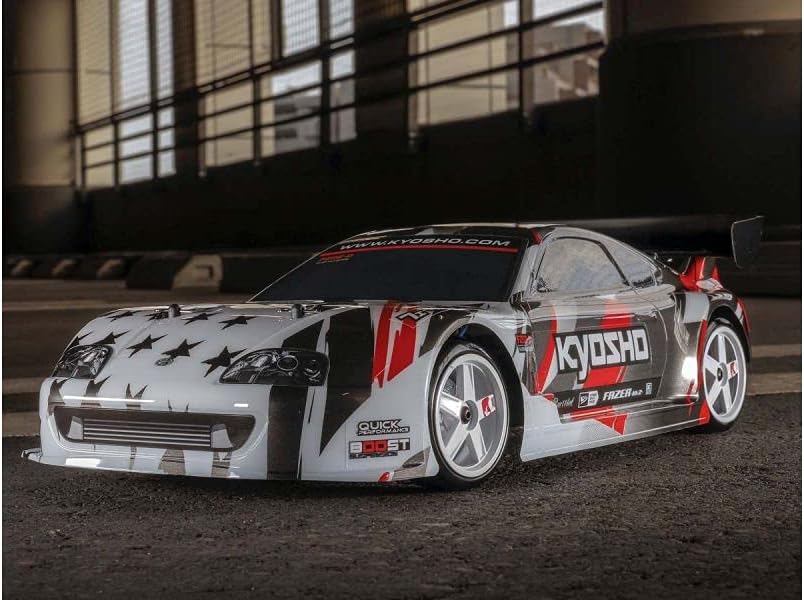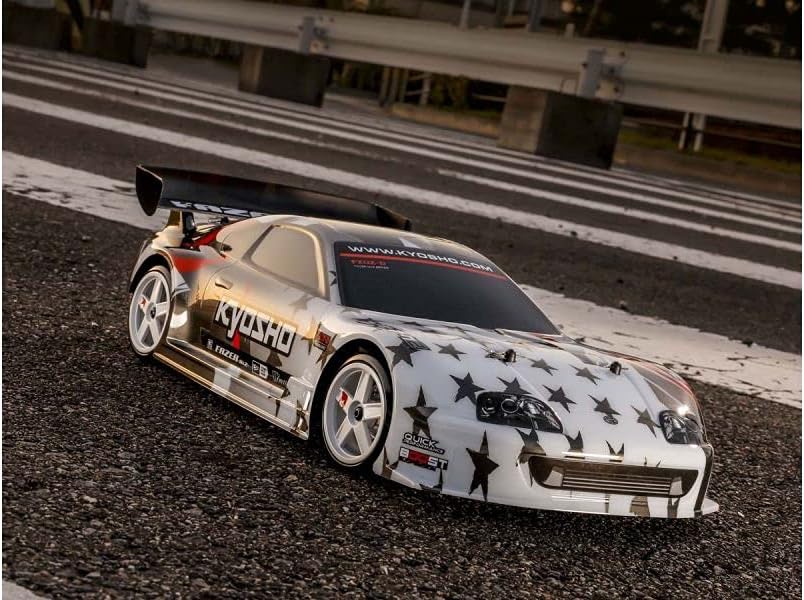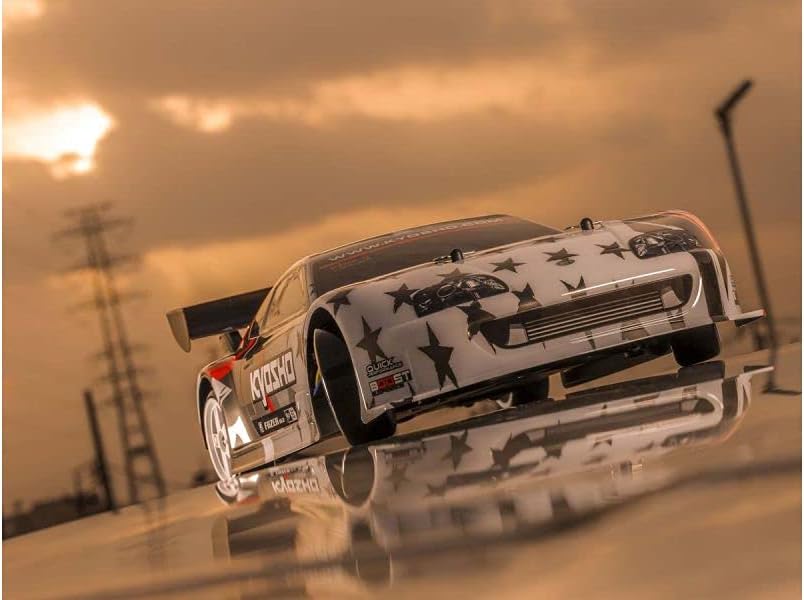In this guide, I will go over everything you need to know as a beginner to start drifting RC cars. I’ll cover how to choose a suitable drift RC car and optimize its setup. I’ll then explain techniques for initiating and controlling drifts, including important throttle, steering, and weight transfer inputs. Tips for improving your drifting through practice and analyzing your technique will also be discussed. By the end, you should have a solid understanding of how to get started with this fun, challenging RC car activity.
What is Drifting?
Drifting is a driving technique where the driver intentionally oversteers, causing loss of traction in the rear wheels while maintaining control of the vehicle. The car slides sideways through turns, with the front wheels pointed in one direction and the rear wheels sliding in another. Drifting started as a racing technique but is now also a motorsport in its own right.
In the radio controlled (RC) car world, drifting has become a popular activity. RC drift cars are specially designed with features like rear-wheel drive, low center of gravity, and adjustable components to allow for easier sliding and imprecise cornering. Drivers use throttle, steering input, and weight transfer techniques to initiate, maintain, and control drifts through courses. It takes practice to master control of an RC drift car.

Choosing an RC Car for Drifting
When selecting an RC car for drifting, there are a few key features to look for:
1. Rear-Wheel Drive (RWD)
Rear-wheel drive is an essential trait for a drift car. Having the power delivered to the rear wheels allows you to break the rear tires loose while maintaining control with the front tires. The rear wheels will be able to swing out during cornering with a RWD platform.
2. Low Center of Gravity
A low center of gravity helps improve stability and make it easier to initiate and control drifts. Look for RC cars with a low battery mount, low body, and lower ride height to place more weight near the ground. The lower COG will allow for quicker transitions and changing direction.
3. Adjustable/Modifiable Components
Many aspects of a drift car can be adjusted or modified to improve performance. Look for vehicles with adjustable parts like camber, toe, shocks, springs, slipper clutches, etc. Being able to tune the car to your driving style is key.
4. Adequate Power
The motor must provide enough controlled power to the rear wheels to overcome traction at corner entry. Brushless motors with higher Kv ratings (rpm per volt) offer more power, but make sure it’s manageable.
5. Drift Chassis and Wheels
Purpose built drift chassis or conversion drift kits optimize the design for sliding sideways. Drift tires like radials use specialized tread to break traction.
The right blend of these features in an RC car will enable you to get sideways and hold those smooth drift lines!
List of the Best Drift RC Cars
Preparing Your Drift Car
1. Adjusting the Wheels
When adjusting the wheels on your drift car, you’ll want to add a few degrees of negative camber to the front wheels. This will improve front grip when the car is sliding sideways. The rear toe can be set to have a bit of toe-out which assists with initiating drifts. Front toe is best set to neutral or have just a touch of toe-in. Also check that your rear tires have slightly more wear than the front tires since you want the rear to break traction easier when drifting.
2. Adjusting Ground Clearance
Getting the right ground clearance is important on a drift car. Lowering the ride height by adjusting the shocks and springs helps drop the center of gravity for better balance and quicker transitions from one side to the other. You can also add chassis rails or body mounts to allow the body shell to sit lower over the wheels, further lowering the center of gravity.
3. Adjusting Weight Distribution
Try moving the battery pack location towards the rear of the chassis to put more weight over the drive wheels for better rear traction. Optionally, small weights can also be added towards the rear for additional rearward bias.
4. Upgrades
Some key upgrades worth considering are replacing any plastic bushings with ball bearings to reduce friction and improve steering response. Stiffer springs and higher weight oil shocks will also improve stability and weight transfer characteristics at the limit. Finally, softer tire compounds specifically meant for drifting, as well as sticky drift tires can really improve grip at the edge of the traction threshold.

Learning to Control a Drift
1. Using Throttle and Steering
Using the right techniques with the throttle and steering is critical for initiating and controlling a drift. A common method to start a drift is to throttle up to gain speed going into a corner, then pulse the throttle right at the turn-in point. This sudden power will upset the weight balance and cause the rear to lose traction. As the car begins to slide, you’ll want to make quick opposite steering inputs to maintain the drift angle through the corner. Modulating the throttle smoothly is key to keeping the car sideways without spinning out completely or bogging down. Finding that sweet spot with the throttle will keep you in a controlled drift.
2. Drifting Techniques
There are a few drifting techniques to intentionally initiate and transition into oversteer. The feint drift uses weight transfer right before corner entry to unsettle the car – you’ll shift weight towards the outside tires then quickly flick the steering back the other way so the car rotates and the rear kicks out. The Scandinavian flick utilizes a quick flick of the steering wheel right before turning into a corner to get the car loose. You can also use clutch kicking where you rapidly release and re-engage the clutch to send power to the wheels and break traction.
3. Linking Drifts
When linking drifts between corners, look ahead and plan where you want your next drift line to go. Control the first drift, then begin to transition by momentarily straightening the steering wheel as you change direction and prepare to initiate the next drift. Use the handbrake as needed to help transfer weight and get the car rotated properly for sustaining the next slide.
4. Avoiding Common Mistakes
It takes practice, but you’ll learn to avoid common mistakes like completely letting off the gas during a drift, overcorrecting steering inputs leading to a spin, and inconsistent throttle causing the car to bog down mid-drift. With patience and seat time, you can master linking long, graceful, controlled drifts corner after corner.

Frequently Asked Questions on How to Drift an RC Car
Q: What is the best RC car for drifting?
A: Some of the best drift RC cars feature rear-wheel drive, low center of gravity, adjustable components, and adequate power. Popular ready-to-run choices include the Yokomo YD-2, MST RMX 2.0, and Redcat Lightning Drift. For kits, the Sakura D5S is a top option. Look for a drift chassis or conversion drift kit for ideal out-of-box drift performance.
Q: How do I get an RC car to drift?
A: Initiating a drift requires unsettling the traction at the rear wheels while maintaining control with the front. Approaching a corner at speed, pulse the throttle and turn in to break rear grip. Use quick opposite steering inputs to control the slide angle. Managing the throttle smoothly is key to keep momentum without spinning out. Techniques like feint drifts, Scandinavian flicks, and clutch kicks can help initiate oversteer as well.
Q: What makes an RC car drift better?
A: Optimizing weight balance, friction, traction and geometry will improve drift performance. Lower center of gravity, rearward weight bias, smooth bearings, low ride height, some negative camber up front, and toe-out rear help drifting. Sticky drift tires and locked differentials are ideal. A flexible chassis also allows the rear end to slide more easily.
Q: How do I link drifts together?
A: Linking multiple drifts requires planning your line and controlling the first slide. As you exit a drift, briefly straighten the steering then set up for the next drift by turning in and unsettling the rear grip again. Use the handbrake to transfer weight side-to-side between drifts. Look ahead and visualize connecting each drift into the next in a smooth sequence.
Q: What are common drifting mistakes?
A: Spinning out from overcorrecting, bogging down from inconsistent throttle, understeering from too much speed, and losing momentum from lifting off throttle completely. Make smooth steering inputs, modulate the throttle, control your speed, and keep momentum up. Don’t overadjust a slide or completely lift off the gas if the rear brakes loose.
Q: How can I improve my RC drifting skills?
A: Practice on a small course to work on car control and linking drifts. Focus on specific techniques each session. Watch footage of your runs to analyze and improve. Refine tuning adjustments like camber and weight balance. Drill transitions and backward/reverse drifting. Progress to larger tracks and compete once you have solid fundamentals.
Final Thoughts
Drifting RC cars is an exciting hobby that tests your car control skills. With the right rear-wheel drive vehicle, proper setup, and practice of key techniques, you can learn to make these mini machines gracefully slide sideways. Adjust your ride height, weight distribution, slip angles, and components to optimize for drifting. Initiate slides with feint drifts, clutch kicks or flicks of the steering wheel. Modulate the throttle and steering smoothly to extend and control drifts, planning your line to link slide after slide. Patience and seat time on a small course will improve your ability to balance the car on the limit. Refine your line and respond to oversteer and understeer tendencies.
Enjoyed this guide of how to drift an RC car? Then be sure to check out our other RC Rating guides.



